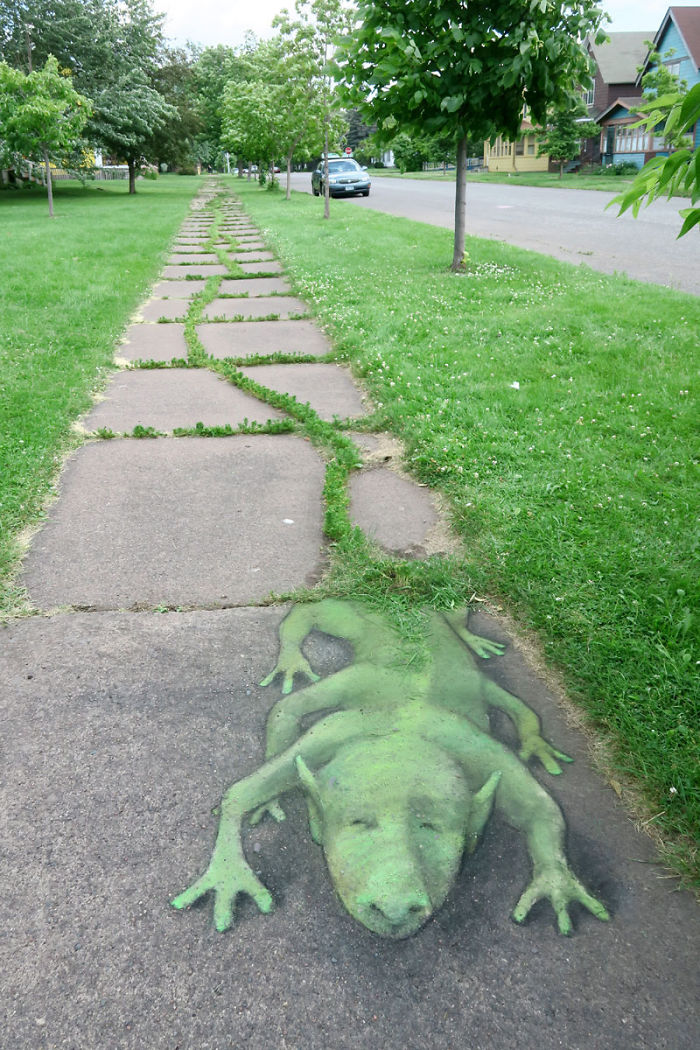
The Ann Arbor District Library hosted local artist and University of Michigan alum David Zinn for his workshop—Drawing from Your Imagination with David Zinn—on January 5th in order to share his artistic techniques with those who attended. Although Zinn is well-known for his chalk and charcoal works on city streets and buildings, this artist used the Thursday afternoon to delve into the creative thought process of his artwork.
The workshop took place in the library’s multi-purpose room, located in the basement. I arrived five minutes past one and found myself in a room bustling with locals both young and old, all enthusiastic to hear from the artist. After they found their seats and chatter hummed down to faint whispers, Zinn introduced himself to us through light jokes and references. His words were accompanied by a slideshow of his latest street art pieces, which were certainly entertaining to look at.

Zinn’s introduction eventually transitioned to demonstrations of his creative thought process. The artist first explained to his audience how blank canvases were intimidating to him, as ideas for art were limitless and therefore overwhelming. Having a canvas with a mark, however, gave Zinn a starting point for his ideas, even if that canvas happened to be a sidewalk with a line of grass. Zinn then elaborated this point by having attendees engage in drawing exercises where everyone would make a scribble, swap papers with someone else, and see what they could draw from that scribble. After everyone saw the products of this exercise, Zinn facilitated another drawing exercise where one person would draw on a folded sheet of paper and another person would complete the drawing on the other side. By viewing art that was created from canvases with a mark, everyone, including me, had a better understanding of where Zinn was coming from.

The workshop ended ten minutes after two, with applause from attendees. I was content with what I learned from the workshop, and am considering on attending future workshops by Zinn in the Ann Arbor District Library.
If you happened to miss out on this opportunity with a local artist, be sure to check the AADL website to see when the next David Zinn workshop will be!









